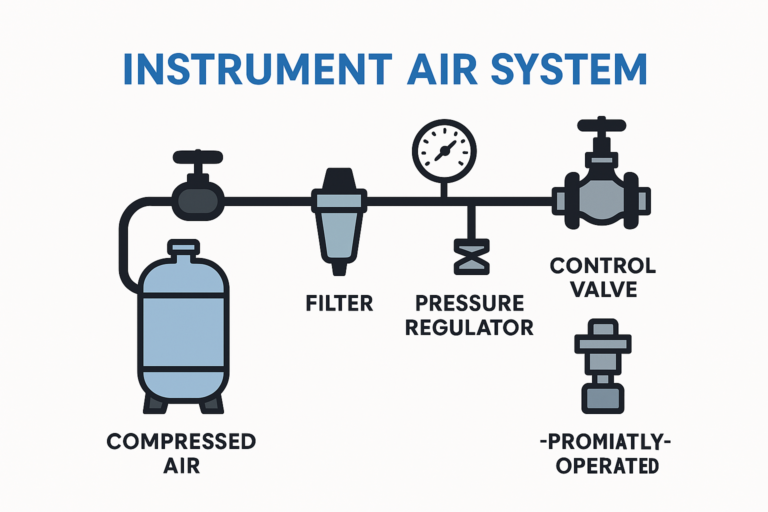Instrument air (IA) is a critical utility in industrial environments, providing clean, dry, and stable compressed air to pneumatic instruments, control valves, and other automation devices. Proper management and maintenance of the instrument air system are essential for ensuring the reliability and longevity of your equipment.
Basic Requirements for Instrument Air
Pressure Range:
Typically maintained at 0.5–0.7 MPa (5–7 bar).Air Quality (according to ISO 8573-1):
Dew Point: ≤ -40°C
Oil Content: ≤ 1 ppm
Solid Particles: ≤ 1 μm
Flow Rate:
Should meet the maximum combined demand of all connected instruments under full load conditions.

Correct Usage Procedures
✅ Pre-Use Inspection
Ensure supply pressure is within the allowable range for the equipment.
Check that filter drain valves are closed.
Inspect air lines for any leakage.
Verify that pressure regulators are functioning properly.
🔧 Connection and Installation Guidelines
Use dedicated instrument air connectors—no unauthorized modifications.
Always blow out air lines before connecting to remove contaminants.
Ensure connections are tight and use proper sealing materials.
Install filter-regulator units as specified by the instrument manufacturer.
⚙️ Daily Operation Tips
Open valves slowly to avoid pressure shocks that may damage equipment.
Drain water from filters regularly (once per shift is recommended).
Monitor pressure gauges and act immediately on abnormal readings.
When equipment is idle, shut off the air supply and vent residual pressure.
Maintenance Guidelines
Inspect and replace filter elements monthly as needed.
Check air quality quarterly—dew point, oil content, and particulate levels.
Lubricate pneumatic components periodically using approved instrument air lubricants.
Ensure air treatment components (filter–regulator–lubricator sets) are working properly.
Common Mistakes & How to Avoid Them
| Mistake | Correct Practice |
|---|---|
| Mixing instrument air with process air | Strictly separate air sources; IA must be clean and dedicated |
| Operating at excessive pressure | Use pressure regulators to maintain proper levels |
| No filter or poorly maintained filters | Install high-quality filters and maintain them regularly |
| Ignoring condensate drainage | Establish and follow a regular draining schedule |
Safety Precautions
Never use instrument air to clean clothing or the human body.
Isolate and depressurize the system before maintenance.
Immediately repair any air leaks; do not operate with known faults.
Treat high-pressure air as hazardous—use proper PPE and handling procedures.
✅ Conclusion
By following proper design, operation, and maintenance practices, an instrument air system can greatly enhance the performance, safety, and uptime of industrial automation equipment. A well-maintained IA system reduces downtime, minimizes equipment wear, and ensures process consistency.
